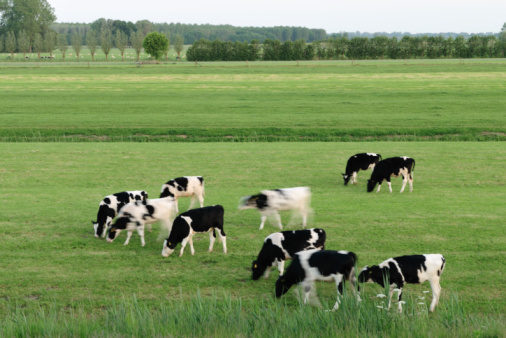Boulder, CO—The practice of grass-based, environmentally friendly organic dairy farming is better for cows’ health, and leads to better quality milk, too, according to a recent report. The research, conducted by The Organic Center and published under the title, “A Dairy Farm’s Footprint,” presents the conclusions that organic dairy farms support healthier, less stressed, more frequently lactating and longer-living cows. Organic dairies also have a smaller carbon footprint than high-production, conventional dairies (with manure methane emissions reduced by 60% to 80%) and produce milk with a superior nutritional profile.
“Cows on organic dairy farms consume far more forage-based feed and pasture, and far less grain and protein supplements than cows on conventional dairy farms. As a result, organic milk contains much higher levels of heart-healthy omega-3 fatty acids, as well as more conjugated linoleic acid (CLA),” says Charles Benbrook, Ph.D., chief scientist for The Organic Center and one of the report’s authors. He says that these are important fatty acids for brain and nervous system development, as they slow the aging process, help retain mental acuity and promote healthy immune and cardiovascular systems. Organic milk also has higher protein and antioxidant content when compared to conventional milk, according to the report.
Other findings about the overall benefits of organic dairy farming include:
- Milking cow replacement rates are 30% to 46% below conventional farms (due to longer life span)
- Total amount of feed required is reduced
- Less waste is generated by raising new cows
- Less required attempts at breeding organic farm cows (1.8 to 2.3 breeding attempts per calf carried to term versus 3.5 for conventional farms)
Benbrook says that organic dairy farming will grow in cost-effectiveness as more organic crop growers arrive to lower the price of feed. For organic dairies producing their own forage, profits are comparable to conventional farming now. “Experienced organic farmers can produce forage-based feeds for about the same cost as on conventional farms, and in some cases, at markedly lower costs,” Benbrook says.
Published in WholeFoods Magazine, January 2011 (published ahead of print on 11/19/2010)










